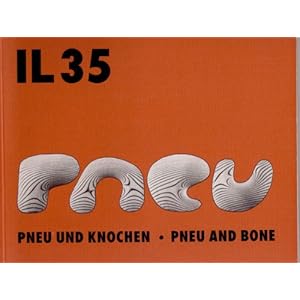Otto utilized formfinding methods and was a master at translating nature's principles to laws of physics and then to architectural design. His IL series is a great documentation of his methods. This is a summary taken from reading 'Pneu and Bone'.
“Pneu (greek : Pneuma = air) as an all-embracing term for a structural system which can be clearly distinguished from many other systems and which has particular characteristics” Frei Otto.
Pneu :
One of the most efficient technical structural systems is the pneu. A pneu is a structural system consisting of a ductile envelope which is capable of supporting tensile stress, is internally pressurised and surrounded by a medium. The pneu allows forces to transferred over considerable distances with a minimum use of materials , and extremely wide span structures to be erected.
Pneu is the structural system of the living nature.
Pneu as a structure used to transfer forces and also as an agent for form generation.
Whenever parts of such objects solidify and become hard like the carapaces of a single cell organisms(eg: radiolaria) like the wood of plants and the shells and bones of animals (shells of insects, internal skeletons of vertebrates). These components are rigid and take compressive loads.(they are no longer pneus) but retain the shape of the pneus from, the structural pneu system is always preserved in principle. It represents the active and living part, whilst the hardened parts maybe regarded as non living or at least less alive substance which can also have load bearing functions. They evolve as pneus , harden in that shape and become other structures such as structural members, skeletons, or shells or in brief: they become non- pneus in the form of structural members, beams and shells. Maybe its through selection from an infinite number of mutations and environmental factors.
Most objects in living nature can be regarded as 3d fibre nets with varying mesh sizes. In most cases however the mesh size in the outer fibres is smaller thus creating high tensile areas of closely spaced fibres which act like fine nets or membranes.



No comments:
Post a Comment